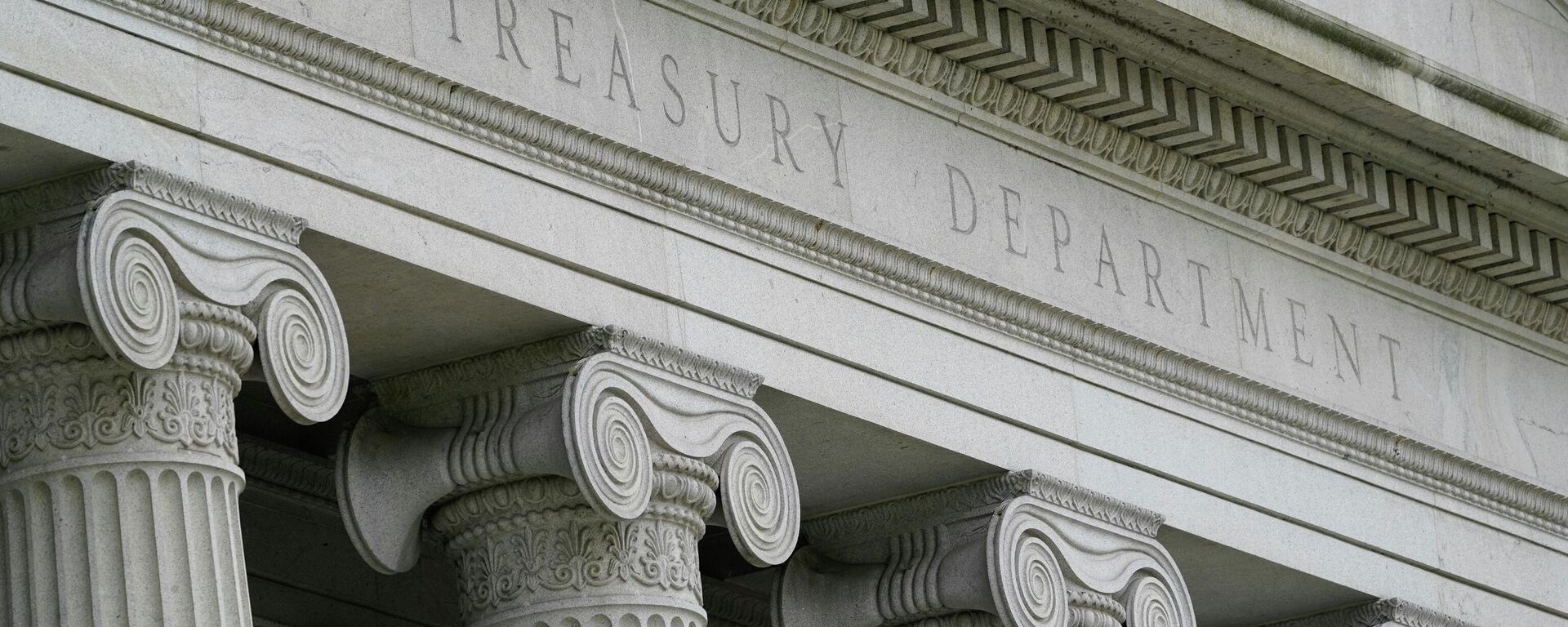https://sputnikglobe.com/20230526/the-final-countdown-goldman-sachs-economists-expect-us-default-by-june-9-1110611592.html
The Final Countdown: Goldman Sachs Economists Expect US Default by June 9
The Final Countdown: Goldman Sachs Economists Expect US Default by June 9
Sputnik International
Two economists working for one of the world’s biggest banks have made a startling announcement: the US government has about two weeks’ worth of money left before it will be forced to default on its debt.
2023-05-26T15:36+0000
2023-05-26T15:36+0000
2023-05-26T15:36+0000
americas
goldman sachs
us debt ceiling crisis
default
https://cdn1.img.sputnikglobe.com/img/07e5/03/09/1082297338_0:100:1921:1180_1920x0_80_0_0_331582321a4660b0deb091fc52f47560.jpg
Alec Phillips and Tim Krupa, who work for Goldman Sachs, said on Friday that by June 2, they calculate the US will have just $30 billion left with which to pay its prior debt-limit obligations, and that the account will enter the negative by June 9.The debt ceiling was reached back in January, but Republicans now in control of the US House of Representatives declined to extend the ceiling, seeing an opportunity in the threat of a default to force Democrats to agree to big budget cuts to which they would otherwise object. But with Democrats defiantly refusing to agree to budget cuts and Republicans intransigent about budget limits as part of a debt ceiling bill, the showdown has dragged on for months.Still, talks have continued, with US President Joe Biden canceling a tour of Asia to head the negotiations in Washington. US media reports on Friday indicated that Biden and House Speaker Kevin McCarthy (R-CA) were closing in on a deal, but several key issues remained outstanding, including scaling back plans to hire more Internal Revenue Service (IRS) auditors, halting non-defense discretionary spending from increasing beyond their 2023 levels, and whether or not the deal would raise the debt ceiling for one year or two.A default is almost certain to destroy the government’s credit rating and trigger an economic crisis. In 2011, a similar crisis resulted in Standard & Poor’s and Moody’s bond rating companies downgrading the US federal government from a AAA rating to AA+, even though a default was technically avoided and a deal was agreed to just hours before the default would have occurred.
https://sputnikglobe.com/20230523/us-treasury-reportedly-asks-if-federal-agencies-can-delay-payments-to-avert-debt-default-1110546437.html
americas
Sputnik International
feedback@sputniknews.com
+74956456601
MIA „Rossiya Segodnya“
2023
News
en_EN
Sputnik International
feedback@sputniknews.com
+74956456601
MIA „Rossiya Segodnya“
Sputnik International
feedback@sputniknews.com
+74956456601
MIA „Rossiya Segodnya“
debt ceiling; default; goldman sachs; budget
debt ceiling; default; goldman sachs; budget
The Final Countdown: Goldman Sachs Economists Expect US Default by June 9
Two economists working for one of the world’s biggest banks have made a startling announcement: the US government has about two weeks’ worth of money left before it will be forced to default on its debt.
Alec Phillips and Tim Krupa, who work for Goldman Sachs, said on Friday that by June 2, they calculate the US will have just $30 billion left with which to pay its prior debt-limit obligations, and that the account will enter the negative by June 9.
The US Treasury has given Congress a deadline of June 1 by which to reach a deal to lift the debt ceiling - a self-imposed limit on appropriations that is blocking lawmakers from giving the federal government more money. Phillips and Krupa said the deadline was “very accurate, in our view,” since it’ll likely leave just a week’s worth of wiggle room.
The debt ceiling was reached back in January, but Republicans now in control of the US House of Representatives declined to extend the ceiling, seeing an opportunity in the threat of a default to force Democrats to agree to big budget cuts to which they would otherwise object. But with Democrats defiantly refusing to agree to budget cuts and Republicans intransigent about budget limits as part of a debt ceiling bill, the showdown has dragged on for months.
The Treasury has used “extraordinary measures” to keep paying the bills amid the dispute, shifting around already-appropriated funds to forestall a default. But those efforts can only go on for so long, Treasury Secretary Janet Yellen has warned, and other budget experts such as the Congressional Budget Office have vindicated her fears.
Still,
talks have continued, with US President Joe Biden canceling a tour of Asia to head the negotiations in Washington. US media reports on Friday indicated that Biden and House Speaker Kevin McCarthy (R-CA) were closing in on a deal, but several key issues remained outstanding, including scaling back plans to hire more Internal Revenue Service (IRS) auditors, halting non-defense discretionary spending from increasing beyond their 2023 levels, and whether or not the deal would raise the debt ceiling for one year or two.
Phillips and Krupa, the Goldman Sachs economists, gave an 80% chance that a full-fledged deal would be agreed to by Saturday, with a 10% chance it would only be a short-term deal to avoid the impending default. They gave a 10% chance that Congress wouldn’t act in time and the US government would default on its debts.
A default is almost certain to destroy the government’s credit rating and trigger an economic crisis. In 2011, a similar crisis resulted in Standard & Poor’s and Moody’s bond rating companies downgrading the US federal government from a AAA rating to AA+, even though a default was technically avoided and a deal was agreed to just hours before the default would have occurred.



